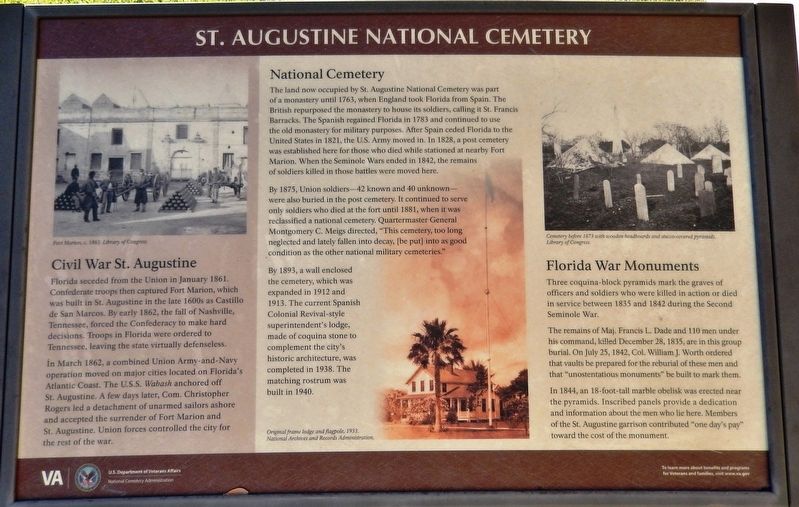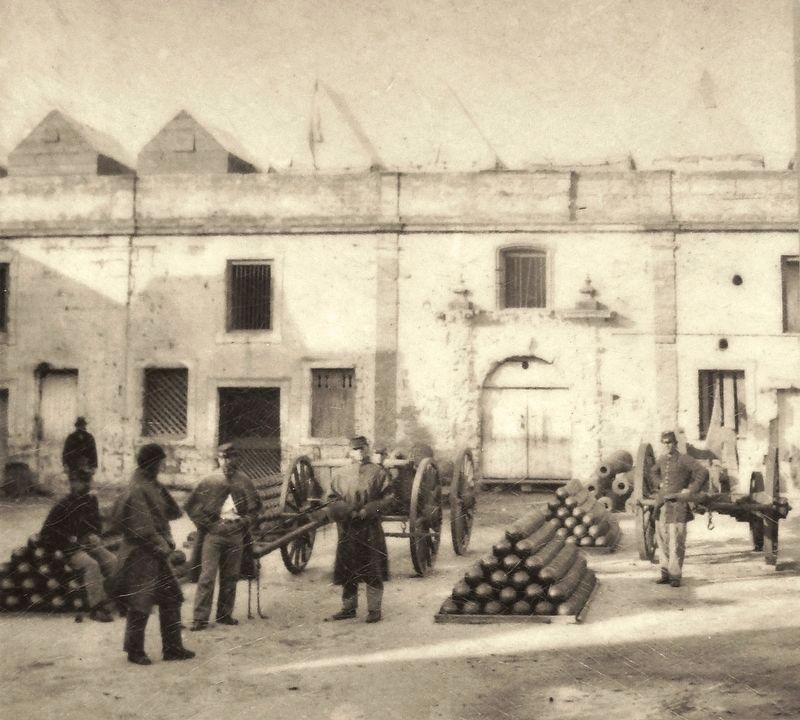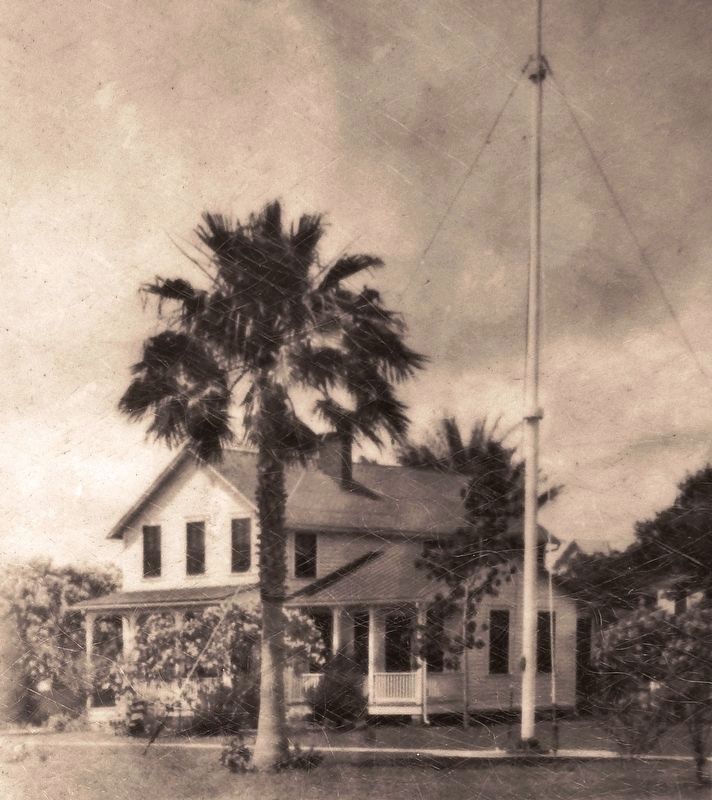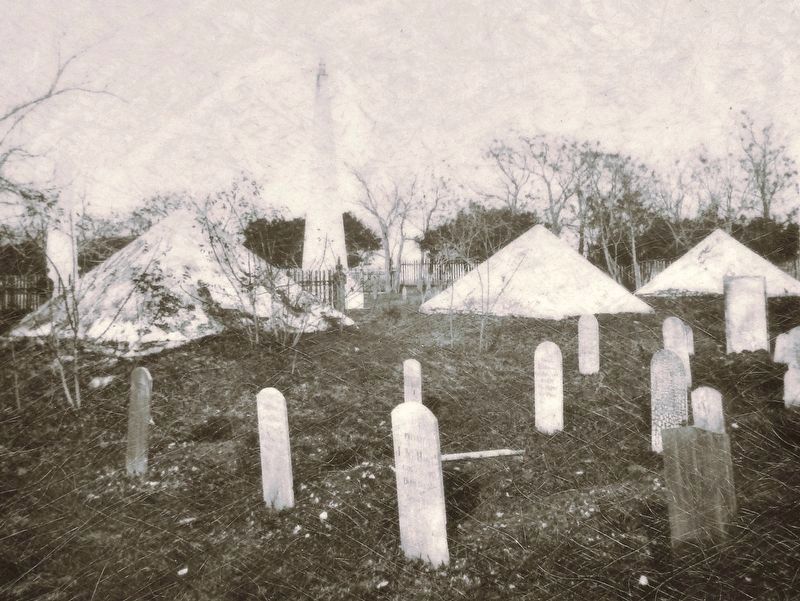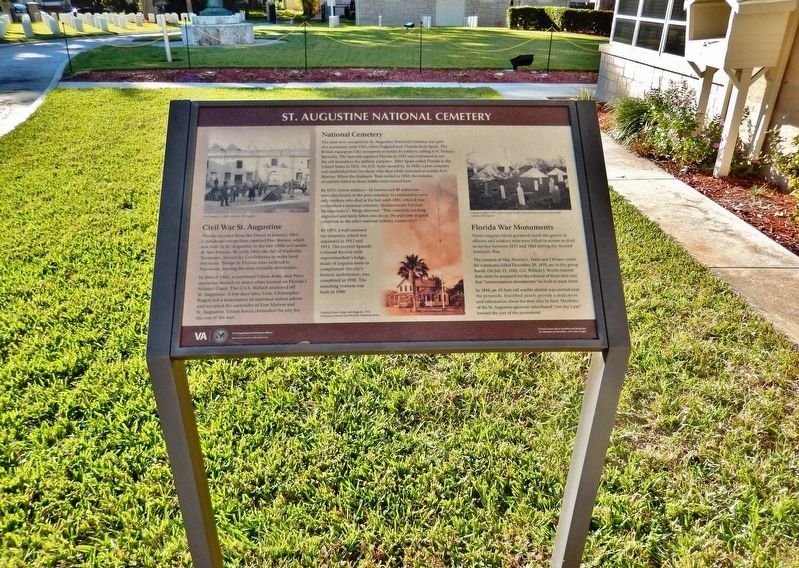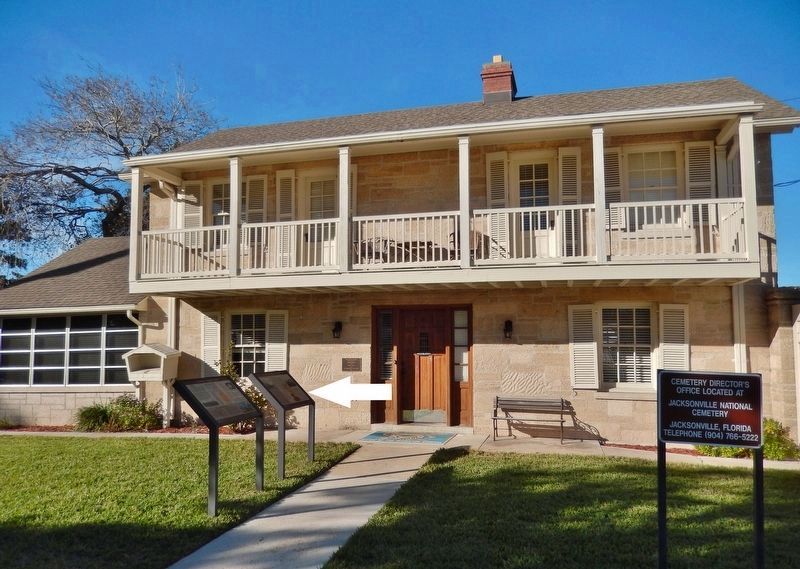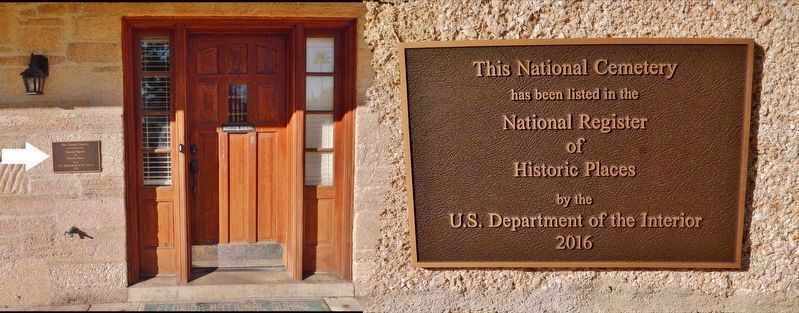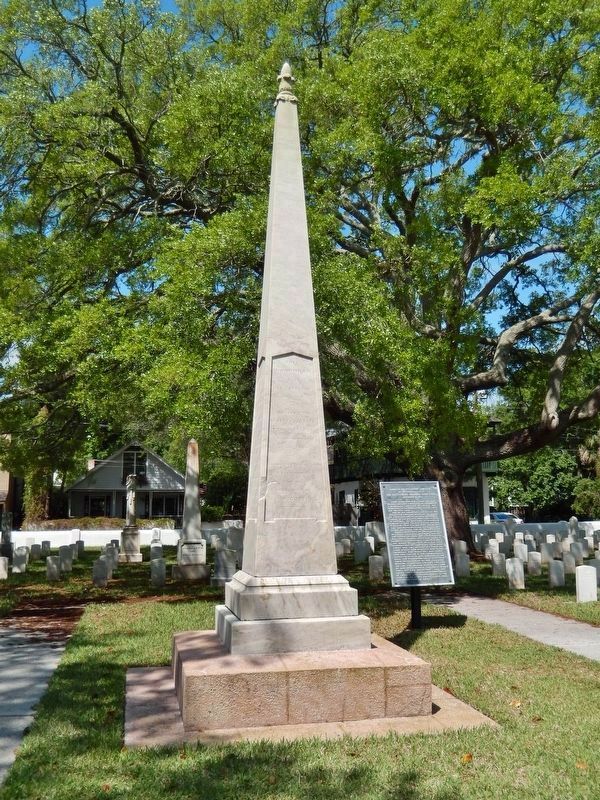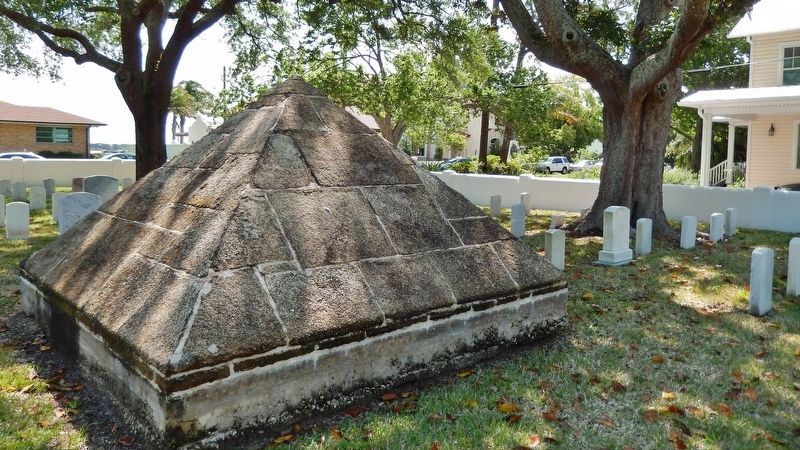St. Augustine in St. Johns County, Florida — The American South (South Atlantic)
St. Augustine National Cemetery
Civil War St. Augustine
Florida seceded from the Union in January 1861. Confederate troops then captured Fort Marion, which was built in St. Augustine in the late 1600s as Castillo de San Marcos. By early 1862, the fall of Nashville, Tennessee, forced the Confederacy to make hard decisions. Troops in Florida were ordered to Tennessee, leaving the state virtually defenseless.
In March 1862. a combined Union Army-and-Navy operation moved on major cities located on Florida's Atlantic Coast. The U.S.S. Wabash anchored off St. Augustine. A few days later, Com. Christopher Rogers led a detachment of unarmed sailors ashore and accepted the surrender of Fort Marion and St. Augustine. Union forces controlled the city for the rest of the war.
National Cemetery
The land now occupied by St. Augustine National Cemetery was part of a monastery until 1763, when England took Florida from Spain. The British repurposed the monastery to house its soldiers, calling it St. Francis Barracks. The Spanish regained Florida in 1783 and continued to use the old monastery for military purposes. After Spain ceded Florida to the United States in 1821, the U.S. Army moved in. In 1828, a post cemetery was established here for those who died while stationed at nearby Fort Marion. When the Seminole Wars ended in 1842, the remains of soldiers killed in those battles were moved here.
By 1875, Union soldiers—42 known and 40 unknown—were also buried in the post cemetery. It continued to serve only soldiers who died at the fort until 1881, when it was reclassified a national cemetery. Quartermaster General Montgomery C. Meigs directed, “This cemetery, too long neglected and lately fallen into decay, [be put] into as good condition as the other national military cemeteries.”
By 1893, a wall enclosed the cemetery, which was expanded in 1912 and 1913. The current Spanish Colonial Revival-style superintendent's lodge, made of coquina stone to complement the city's historic architecture, was completed in 1938. The matching rostrum was built in 1940.
Florida War Monuments
Three coquina-block pyramids mark the graves of officers and soldiers who were killed in action or died in service between 1835 and 1842 during the Second Seminole War.
The remains of Maj. Francis L. Dade and 110 men under his command, killed December 28, 1835, are in this group burial. On July 25, 1842, Col. William J. Worth ordered that vaults be prepared for the reburial of these men and that “unostentatious monuments” be built to mark them.
In 1844, an 18-foot-tall marble obelisk was erected near the pyramids. Inscribed panels provide a dedication and information about the men who lie here. Members of the St. Augustine garrison contributed “one day's pay” toward the cost of the monument.
Erected by U.S. Department of Veterans Affairs, National Cemetery Administration.
Topics and series. This historical marker is listed in these topic lists: Cemeteries & Burial Sites • War, US Civil • Wars, US Indian. In addition, it is included in the National Cemeteries series list.
Location. 29° 53.183′ N, 81° 18.569′ W. Marker is in St. Augustine, Florida, in St. Johns County. Marker is on Marine Street, 0.1 miles south of St. Francis Street, on the right when traveling south. Marker is located in front of the St. Augustine National Cemetery administration office. Touch for map. Marker is at or near this postal address: 104 Marine Street, Saint Augustine FL 32084, United States of America. Touch for directions.
Other nearby markers. At least 8 other markers are within walking distance of this marker. A National Cemetery System (here, next to this marker); Major Dade and His Command Monuments (here, next to this marker); Never Forget Garden (within shouting distance of this marker); King's Bakery (within shouting distance of this marker); St. Francis Barracks (within shouting distance of this
marker); Florida’s First Muster Site (within shouting distance of this marker); Address by President Lincoln (within shouting distance of this marker); Dade Pyramids (within shouting distance of this marker). Touch for a list and map of all markers in St. Augustine.
Regarding St. Augustine National Cemetery. National Register of Historic Places #16000271 (2016)
Related markers. Click here for a list of markers that are related to this marker. St. Augustine National Cemetery
Also see . . .
1. Saint Augustine National Cemetery. In 1938, a new superintendent's lodge was constructed according to designs approved by the city council, which sought to preserve the unique heritage of St. Augustine. Built of coquina with an overhanging balcony and shingle roof, the building was architecturally in keeping with the style of the old Spanish homes in the historic district. A coquina rostrum at the northern end of the cemetery, the stage for official ceremonies, echoed the curving roofline silhouettes of the Spanish Baroque style seen in other prominent city structures. (Submitted on December 22, 2018, by Cosmos Mariner of Cape Canaveral, Florida.)
2. St. Augustine National Cemetery. The first interment took place in the area of the cemetery in 1828 it was then used as the post cemetery for the St. Francis Barracks. The first burials were soldiers stationed at St. Francis Barracks and veterans of the Indian Wars, including many that were transferred from burial grounds in what was then Seminole controlled territory. During the American Civil War, St. Augustine was initially claimed by the Confederacy, but was quickly occupied by Union forces and remained in Union hands for the remainder of the war. After the war, the cemetery was expanded and improved, and in 1881 it became a National Cemetery. (Submitted on December 22, 2018, by Cosmos Mariner of Cape Canaveral, Florida.)
Credits. This page was last revised on January 2, 2019. It was originally submitted on December 21, 2018, by Cosmos Mariner of Cape Canaveral, Florida. This page has been viewed 334 times since then and 33 times this year. Photos: 1, 2, 3, 4. submitted on December 21, 2018, by Cosmos Mariner of Cape Canaveral, Florida. 5. submitted on December 28, 2018, by Cosmos Mariner of Cape Canaveral, Florida. 6. submitted on December 21, 2018, by Cosmos Mariner of Cape Canaveral, Florida. 7. submitted on December 22, 2018, by Cosmos Mariner of Cape Canaveral, Florida. 8, 9. submitted on December 28, 2018, by Cosmos Mariner of Cape Canaveral, Florida. • Bernard Fisher was the editor who published this page.
